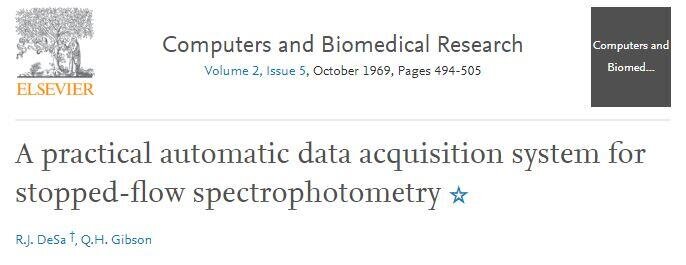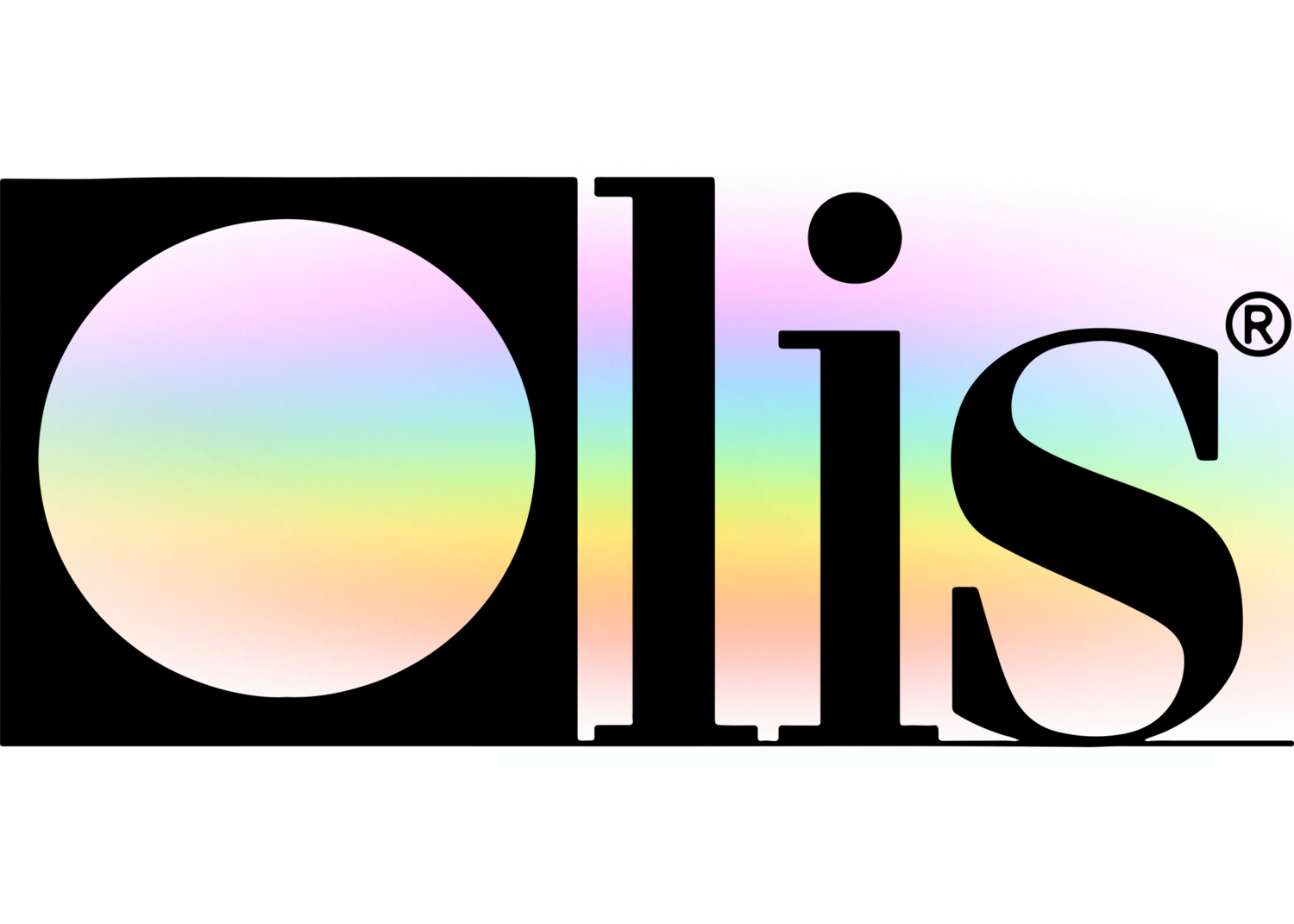The Main Principles Of Uv/vis/nir
The Main Principles Of Uv/vis/nir
Blog Article
The 2-Minute Rule for Circularly Polarized Luminescence
Table of ContentsThe 4-Minute Rule for Circularly Polarized LuminescenceThe 9-Minute Rule for Spectrophotometers6 Easy Facts About Circularly Polarized Luminescence ShownNot known Details About Spectrophotometers Circular Dichroism Things To Know Before You Get ThisThe Best Guide To Uv/vis/nirRumored Buzz on Circularly Polarized LuminescenceExcitement About Uv/vis/nirRumored Buzz on Uv/visWhat Does Spectrophotometers Mean?Our Circularly Polarized Luminescence StatementsThe 25-Second Trick For Circular DichroismSpectrophotometers - The Facts
It is then scanned through the sample and the reference options. Portions of the event wavelengths are sent through, or shown from, the sample and the referral. Electronic circuits transform the relative currents into direct transmission percentages and/or absorbance/concentration worths.The transmission of a referral compound is set as a baseline (information) value, so the transmission of all other substances are recorded relative to the preliminary "zeroed" compound. The spectrophotometer then converts the transmission ratio into 'absorbency', the concentration of particular components of the test sample relative to the initial compound.
Because samples in these applications are not easily available in large quantities, they are particularly fit to being examined in this non-destructive strategy. In addition, precious sample can be saved by using a micro-volume platform where as little as 1u, L of sample is needed for total analyses. A quick description of the treatment of spectrophotometry includes comparing the absorbency of a blank sample that does not consist of a colored substance to a sample that contains a colored compound.
Uv/vis/nir Things To Know Before You Get This
In biochemical experiments, a chemical and/or physical home is selected and the procedure that is used specifies to that property in order to derive more info about the sample, such as the amount, purity, enzyme activity, etc. Spectrophotometry can be used for a number of methods such as figuring out optimum wavelength absorbance of samples, figuring out optimum p, H for absorbance of samples, determining concentrations of unknown samples, and identifying the p, Ka of numerous samples.: 21119 Spectrophotometry is also a helpful procedure for protein purification and can likewise be utilized as a technique to produce optical assays of a compound.
It is possible to know the concentrations of a two element mixture utilizing the absorption spectra of the standard solutions of each part. To do this, it is required to know the termination coefficient of this mixture at 2 wave lengths and the termination coefficients of options that include the known weights of the 2 components.

Some Known Details About Circular Dichroism
Area. The concentration of a protein can be approximated by determining the OD at 280 nm due to the existence of tryptophan, tyrosine and phenylalanine.
This approach requires a spectrophotometer capable of determining in the UV area with quartz cuvettes.: 135 Ultraviolet-visible (UV-vis) spectroscopy involves energy levels that delight electronic shifts. Absorption of UV-vis light delights molecules that are in ground-states to their excited-states.
20. 8 O.D. Ink manufacturers, printing companies, textiles suppliers, and a lot more, require the information supplied through colorimetry. They take readings in the region of every 520 nanometers along the noticeable region, and produce a spectral reflectance curve or a data stream for alternative presentations. These curves can be utilized to evaluate a new batch of colorant to inspect if it makes a match to specifications, e.
6 Easy Facts About Uv/vis Shown
Conventional visible area spectrophotometers can not find if a colorant or the base material has fluorescence. This can make it challenging to manage color problems if for instance one or more of the printing inks is fluorescent. Where a colorant consists of fluorescence, a bi-spectral fluorescent spectrophotometer is utilized (https://calendly.com/olisclarity1/30min). There are two major setups for visual spectrum spectrophotometers, d/8 (spherical) and 0/45.
Researchers utilize this instrument to measure the quantity of compounds in a sample. In the case of printing measurements 2 alternative settings are typically utilized- without/with uv filter to manage much better the effect of uv brighteners within the paper stock.
The Best Guide To Uv/vis
Some applications need little volume measurements which can be performed with micro-volume platforms. As described in the applications area, spectrophotometry can be used in both qualitative and quantitative analysis of DNA, RNA, and proteins. Qualitative analysis can be used and spectrophotometers are utilized to tape spectra of substances by scanning broad wavelength regions to determine the absorbance properties (the intensity of the color) of the substance at each wavelength.

What Does Uv/vis/nir Do?
One significant factor is the type of photosensors that are available for different spectral regions, but infrared measurement is likewise tough due to the fact that virtually whatever discharges IR as thermal radiation, particularly at wavelengths beyond about 5 m. Another issue is that numerous materials such as glass and plastic soak up infrared, making it incompatible as an optical medium.
Samples for IR spectrophotometry may be smeared between two discs of potassium bromide or ground with potassium bromide and pressed into a pellet. Where liquid services are to be determined, insoluble silver chloride is utilized to build the cell. Spectroradiometers, which operate nearly like the noticeable area spectrophotometers, are designed to determine the spectral density of illuminants. 2013. p. 13. Allen, DW; Cooksey, C; Tsai, BK (Nov 13, 2009). "Spectrophotometry". Obtained Dec 23, 2018. Ninfa AJ, Ballou DP, Benore M (2010 ). Fundamental Lab Methods for Biochemistry and Biotechnology (2nd ed.). Hoboken: Wiley & Sons. ISBN 9780470087664. OCLC 488246403. Schwedt G (1997 ). The necessary guide to analytical chemistry.
Chichester, NY: Wiley. pp. 1617. ISBN 9780471974123. OCLC 36543293. Ninfa AJ, Ballou DP (2004 ). Fundamental laboratory techniques for biochemistry and biotechnology. Hoboken: Wiley. p. 66. ISBN 9781891786006. OCLC 633862582. Rendina G (1976 ). Philadelphia, PA: W. B. Saunders Business. pp. 46-55. ISBN 0721675506. OCLC 147990. Oke, J. B.; Gunn, J. E.
The 9-Minute Rule for Uv/vis/nir
"Secondary standard stars for absolute spectrophotometry". The Astrophysical Journal. 266: 713. Bibcode:1983 Ap, J..266..713 O. doi:10. 1086/160817. Ishani, G (2006 ). "The first business UV-vis spectrophotometer". p. 100. Retrieved Dec 23, 2018. Simoni, RD; Hill, RL; Vaughan, M; Tabor, H (Dec 5, 2003). "A Traditional Instrument: The Beckman DU Spectrophotometer and Its Inventor, Arnold O.
278 (49 ): e1. doi:. ISSN 1083-351X. Beckman, A. O.; Gallaway, W. S.; Kaye, W.; Ulrich, W. F. (March 1977). "History of spectrophotometry at Beckman Instruments, Inc". Analytical Chemistry. 49 (3 ): 280A300A. doi:10. 1021/ac50011a001. "Hewlett Packard: Substance Recognition with HP 8450 A UV Noticeable Spectrophotometer". Analytical Chemistry. 51 (12 ): 1188A1189A. 1979-10-01.
Ninfa AJ, Ballou DP, Benore M (2015 ). Fundamental Laboratory Methods for Biochemistry and Biotechnology (3, rev. ed.). UV/Vis/NIR. Laboratory Devices.
Circular Dichroism Can Be Fun For Anyone
"Applied Spectrophotometry: Analysis of a Biochemical Mix". Biochemistry and Molecular Biology Education. Journal of Biochemistry Education.
Getting The Circular Dichroism To Work
U.S. Department of Commerce National Bureau of Standards unique publication; 378. Washington, D.C.: U.S. National Bureau of Standards.
The process begins with a controlled light that brightens the evaluated sample. In the case of reflection, as this light communicates with the sample, some is taken in or discharged. The emitted light travels to the detector, which is examined, quantified, and provided as industry-standard color scales and indices.
All terms are examined over the visible spectrum from 400 to 700 nm. In the case of transmission, when the light connects with the sample, it is either absorbed, shown, or transferred.
Uv/vis/nir Fundamentals Explained
Examples include APHA (American Public Health Association) for watercolor and purity analysis, ASTM D1500 for petrochemical color analysis, edible oil indices utilized in food, and color analyses of beverages. All terms are examined over the visible spectrum from 400 to 700 nm.
Image Credit: Matej Kastelic/ Dr. Arnold J. Beckman and his colleagues at the National Technologies Laboratories initially invented the spectrophotometer in 1940. In 1935 Beckman founded the business, and the discovery of the spectrophotometer was their most ground-breaking development. Dr. Bruce Merrifield, a Nobel prize-winning biochemist, specified that the invention of the spectrophotometer was "most likely the most crucial instrument ever established towards the development of bioscience." Before the discovery of the spectrophotometer, chemical analyses took weeks to complete, with 25% accuracy.
Circularly Polarized Luminescence Things To Know Before You Get This
99% precision. Gradually, scientists kept improving the spectrophotometer design to enhance its performance. For circumstances, the UV abilities of the model B spectrophotometer were enhanced by changing the glass prism with a quartz prism. Eventually, the Model DU was created, consisting of a hydrogen light and other enhancements. This instrument was used in commercial labs, clinics, and chemistry and biochemistry departments.
Typically, a spectrophotometer is made up of 2 instruments, specifically, a spectrometer and a photometer. A basic spectrophotometer includes a light source, a monochromator, a collimator for straight light beam transmission, a cuvette to position a sample, and a photoelectric detector.
Unknown Facts About Uv/vis
There are different types of spectrophotometers in numerous sizes and shapes, each with its own function or functionality. A spectrophotometer determines just how much light is reflected by chemical parts. UV/Vis. It determines the difference in light intensity based on the total amount of light presented to a sample and the amount of beam that goes through the sample option
A spectrophotometer is used to identify circularly polarized luminescence the concentration of both colorless and colored solutes in a solution. This instrument is utilized to determine the rate of a response.
Report this page